As both the recreational and medicinal cannabis markets boom, more and more patients are turning to their local budtenders to discover the best strains for pain.
Unlocking the power of marijuana for pain relief was a task reserved for physicians. However, as recreational states continue to up the accessibility of high-quality, medicinal marijuana, patients are able to easily self-medicate with the best herb on earth.
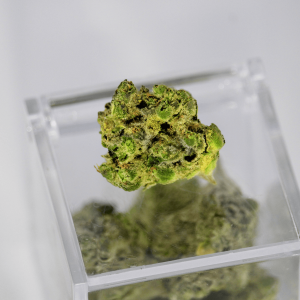
According to the CDC, chronic pain is a leading cause for adult medical care. It’s even estimated that chronic pain affects over 20% of Americans on a daily basis.
That said, many individuals turn to cannabis as a way to medicate for pain management without using OTC drugs because marijuana is an excellent plant for pain relief with fewer side effects.
In this blog, we’ll help you to discover everything you need to know about chronic pain as it relates to cannabis use.
THC vs. CBD
THC (tetrahydrocannabinol) and CBD (cannabidiol) are two of the most well-known compounds found in the cannabis plant. Although both compounds address pain, they ultimately have different effects on the body, especially in regard to psychoactivity.

THC, for example, is responsible for the “high” that’s experienced during cannabis consumption.
THC works by binding to the CB1 receptors in the brain and nervous system. This can cause feelings of euphoria, relaxation, and altered perception. These effects can often dull pain depending on the level of psychoactive effects that hit both the mind and body.
However, CBD is non-psychoactive. In fact, it interacts with an entirely different set of receptors in the body, including the CB2 receptors in the immune system, which can help reduce inflammation and chronic pain. In general, THC is best known for its intoxicating effects, while CBD is known for its therapeutic benefits. Overall, a 1:1 THC and CBD ratio is often desirable, especially for pain relief.
What is the best CBD strain for pain and inflammation?
There’s growing talk surrounding the best CBD ‘strain’ for pain and inflammation. However, ‘strain’ isn’t the best term to describe CBD products.
Rather, many CBD products used for chronic pain relief aren’t strain-specific but are offered as full-spectrum oils, CBD isolate gummies, or even THC-free softgels. All are excellent choices provided that the company derives its CBD from a high-quality source.
Is indica or sativa better for sore muscles?
When it comes to inflammation, many individuals turn to CBD, whereas many stoners exclusively reach for THC-heavy strains, such as the RS11 strain.
Both are powerful, but in general, indica strains often contain a higher amount of CBD (if any) compared to cannabis sativa strains, which are best known for their uplifting effects. Additionally, indica strains can more easily lead to heavy sedation or a more intense body high, which can further aid in the treatment of pain.
With that being said, indica strains are typically chosen to address pain and inflammation such as arthritis, but an individual’s choice ultimately comes down to preference given that some stoners even prefer to reach for evenly balanced hybrid strains such as Pink Runtz or Rainbow Belts.
How Cannabis Relieves Pain
It’s no secret that cannabis has been used for centuries to treat pain. But how exactly do cannabinoids work within the body to counteract pain? Keep reading to find out.
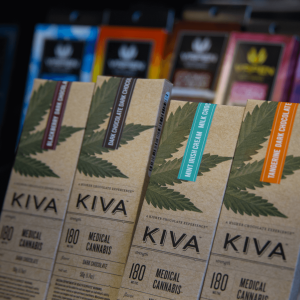
Cannabis interacts with the endocannabinoid system.
The endocannabinoid system is a complex network of receptors within the nervous system that helps regulate various physiological functions, including pain. When cannabinoids interact with the endocannabinoid system, those strains work with the cannabinoid receptors to reduce pain.
Cannabis reduces inflammation.
This is often where CBD shines. Inflammation is a common cause of pain, and cannabis has anti-inflammatory properties that can help reduce inflammation and therefore alleviate pain. If pain relief is the goal, we encourage you to find strains with anti-inflammatory terpenes such as myrcene or caryophyllene.
Cannabis blocks pain signals to the brain.
And this is often where THC content shines. Cannabis can work to block pain signals from reaching the brain, similar to OTC NSAIDs. This action can help reduce the perception of pain.
Cannabis can induce relaxation.
It should come as no surprise that cannabis can help relieve stress by introducing calming effects. Ultimately, this can be beneficial for people who experience pain that is worsened by stress and tension.
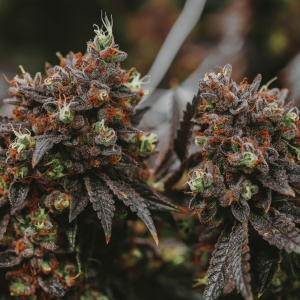
It’s important to keep in mind that cannabis may not work for everybody in regards to pain management. Though cannabis use does not guarantee a pain free life, many users find that its powerful effects are favorable to relieve symptoms of acute pain, inflammation, chronic migraines, stress, nausea, anxiety, nerve pain, depression, chronic pain… the list goes on.
If you’re a novice stoner, we’d suggest starting slow and only consuming cannabis strains in small quantities until you’ve built your tolerance level.
Best Cannabis Ingestion Methods for Chronic Pain
People consume cannabis in a wide variety of ways such as sublingual, inhalation, oral consumption, and even topical application. Keep reading to discover how each ingestion method helps to reduce chronic pain.
Sublingual
Sublingual cannabis consumption refers to a method of ingesting cannabis in which a cannabis extract or tincture is placed under the tongue, where it absorbs into the bloodstream through the mucus membranes.
When cannabis is consumed sublingually, the cannabinoids and other active compounds are absorbed directly into the bloodstream, bypassing the digestive system and liver.
This means that the pain-relieving effects of sublingual cannabis consumption are felt more quickly and more intensely than with other methods of consumption.
As with any THC or CBD cannabis product, it’s important to ease into your initial dose until the desired effects have been reached.
Inhalation
When smoking cannabis, the smoke or vapor is inhaled into the lungs and then absorbed into the bloodstream. The effects of smoking cannabis can be felt almost immediately, as the compounds quickly travel to the brain and other parts of the body.
This fact alone makes inhalation a popular choice for chronic pain relief.

Oral Consumption
When cannabis is consumed orally, it passes through the digestive system and is then absorbed into the bloodstream through the walls of the intestines.
This process takes longer than other methods of consumption, such as smoking, since the cannabinoids have to travel through the digestive system before they reach the bloodstream.
With that being said, it’s an excellent and exceptionally potent way to relieve pain; however, it takes longer to kick in compared to inhalation.
Topical Treatments
Topical treatments involve applying cannabis-infused products, such as creams or balms, directly to the skin. Additionally, topical treatments are deliver the therapeutic benefits of cannabis without the risk of psychoactive effects.
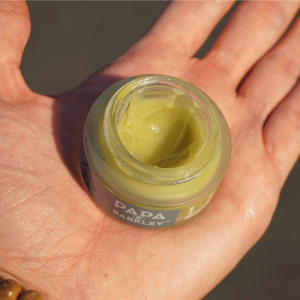
When topical products penetrate the skin, they work with the body’s chemistry and endocannabinoid system, delivering active compounds directly to the affected area. This is why we use topical treatments for localized pain and inflammation in patients, such as arthritis and muscle soreness.
Best Strains for Pain Relief
Now for why you’re really here… the best cannabis strains to relieve pain. Chronic pain relief isn’t easy; however, treating persistent pain is not a lost cause — especially with marijuana strains.
Below you’ll find a list of some of the best marijuana strains to reduce pain.
Best Marijuana Strain for Chronic Pain
1. OG Kush
Along with its high THC content and anti-inflammatory properties, OG Kush can help patients to feel relaxed and even lead to enhanced sleep — all of which ultimately work together to reduce pain.
2. White Widow
Among the most common effects associated with White Widow is its ability to aid in chronic pain relief as it pertains to anxiety, depression, and stress. Since White Widow is a sativa-dominant strain, it won’t leave you locked to the couch as many of the indica strains do.
3. Granddaddy Purple
Granddaddy Purple is a popular strain for relieving pain. This delicious blueberry strain works to reduce pain by alleviating symptoms of muscle spasms, especially compared to other strains.
4. Sour Diesel
Sour Diesel is another sativa-dominant hybrid that we recommend for medical cannabis users. It works to relieve pain associated with anxiety, depression, and chronic fatigue.
5. Northern Lights
Northern Lights is one of the most popular indicas on the medical cannabis market. It’s especially powerful at treating symptoms of anxiety and is one of the best strains for pain thanks to its high THC content and deeply relaxing, potent effects.
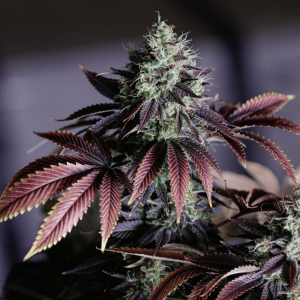
Please note this isn’t a complete list of the best marijuana strains available to treat chronic pain. Ultimately, we need more research fully understand the effects that cannabis has on pain, nerve damage, anxiety, stress, depression, etc.
However, many stoners have noted that the above strains are among the best strains for pain.
FAQs
1. What is the best strain for pain and inflammation?
A few of the best strains for pain and inflammation are Northern Lights, Sour Diesel, Granddaddy Purple, White Widow, and OG Kush. Keep in mind that while pain relief is a desired outcome, other side effects include dry mouth and dry eyes.
2. What kind of strain is Chronic?
Chronic is a hybrid weed strain born from a cross between Northern Lights x Skunk x AK-47. Its flowering time is approximately 63 days.
3. What terpenes are best for pain?
Some of the best terpenes for pain include myrcene, pinene, linalool, limonene, caryophyllene, and humulene.

 Rewards
Rewards





